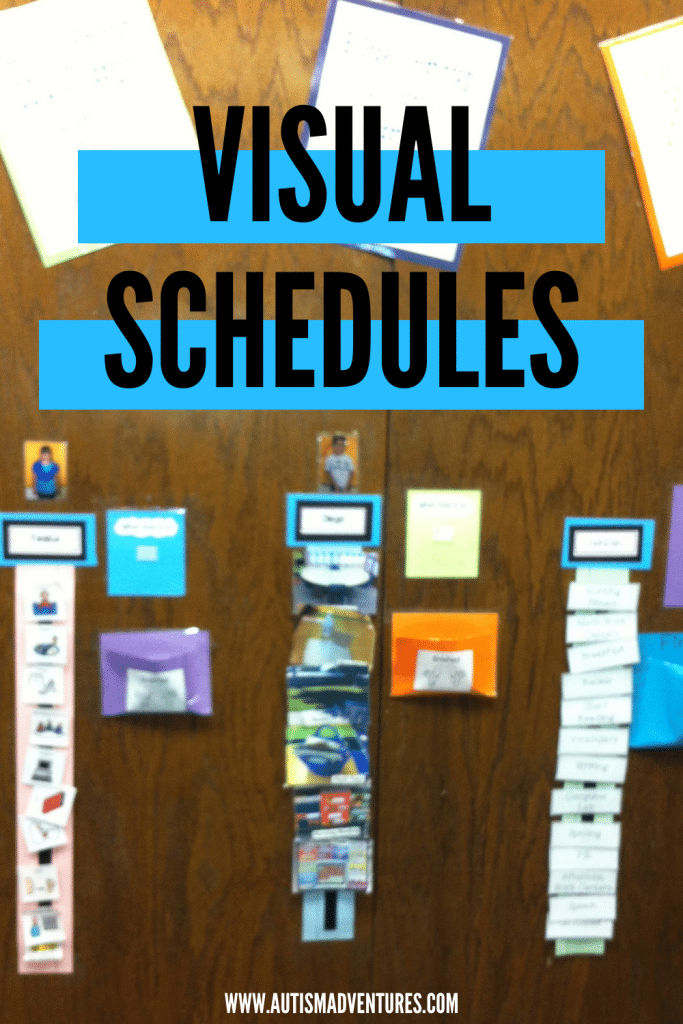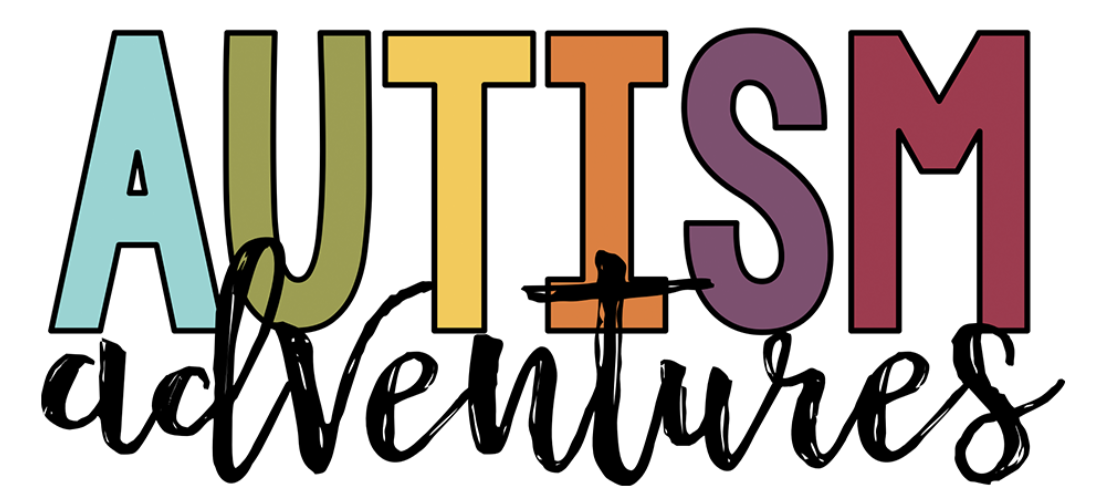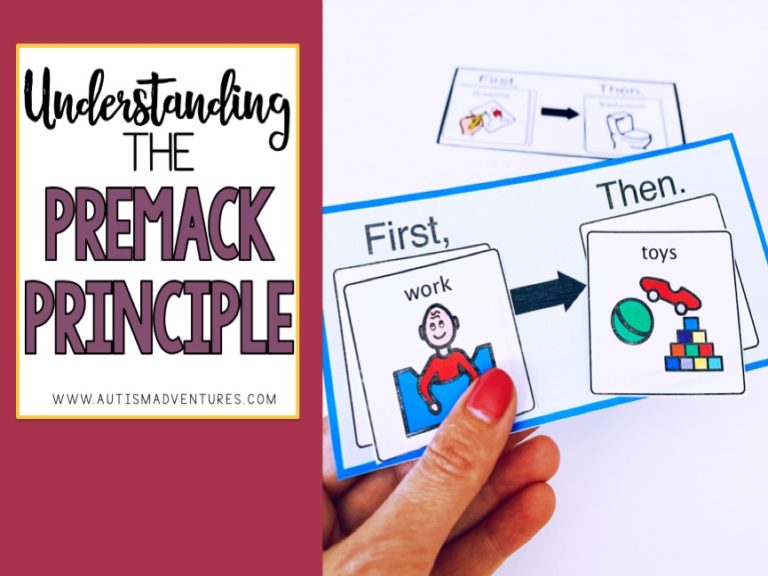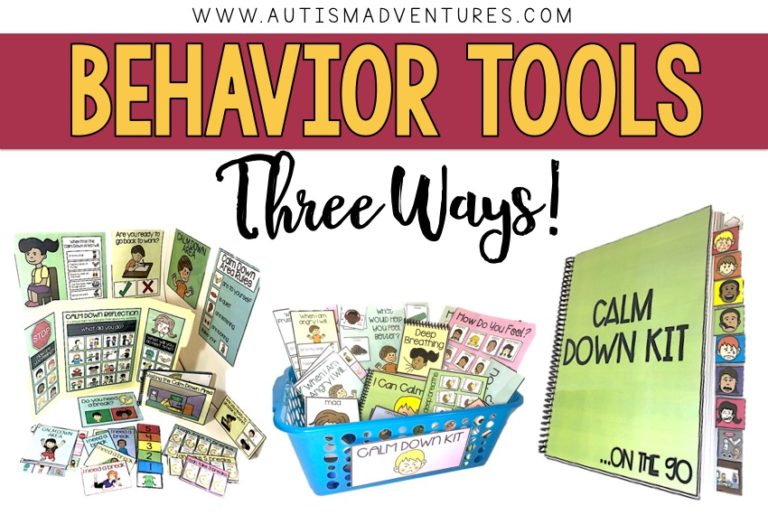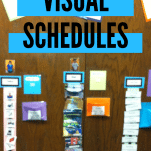Visual Schedules in a Special Education Classroom
Today’s post is all about using visual schedules in your special education classroom. Visual schedules are visual supports to help students become independent within the classroom setting. They display the daily schedule and help with smooth transitions within the classroom. There are a variety of ways you can set up your visual schedule depending on the needs of your students.

What is a Visual Schedule?
A visual schedule is a list of activities that will be happening within your school day. Essentially, it is a daily schedule full of visual cues of different kinds to help students understand the schedule on their own. It is an effective way to minimize transition confusion.
Benefits of Visual Schedules
By providing a clear visual representation of what is expected to the students within their daily routines, it helps build independence and promote success within the special education classroom. Visual schedules come in a variety of formats and are effective tools for visual learners.
Visual schedules are versatile and adaptable in all settings. They can be used in the classroom, therapy sessions or daily routines at home. Visual schedules make transitions less stressful for students and reduce any anxiety or confusion students may have because they provide clear expectations. Schedules help students navigate the day with independence.
Visual supports for students with special needs are key to any classroom management system. By implementing visual schedules, you are setting not only your students, but your staff up for success as well.
What kinds of Visual Schedules Are There?
The importance of utilizing visual schedules in a special education classroom is
well researched and well proven to be successful. With that being said, every classroom must
utilize a wide range of visual schedules to help their students be successful. Depending on the student’s needs, different types of schedules can be used by special education teachers.
Today’s post we will talk about a different types of visual schedules that can be used in special education classrooms and school settings:
Front of the Classroom Schedule
Schedules can vary in all sorts of shapes and sizes, however the important part is that they are consistent across all versions within your classroom. A simple way of ensuring everyone is on the same page is to display a class schedule in the front of the classroom. Although a front of class schedule might not meet the needs of the students on it’s own, it can serve as a reference for staff as students are checking in to their own visual schedules. I simply display my daily schedule on way white board using magnets. This makes for easy access, easy storage, and easy set up. Here is a picture below showing my front of the room schedule.
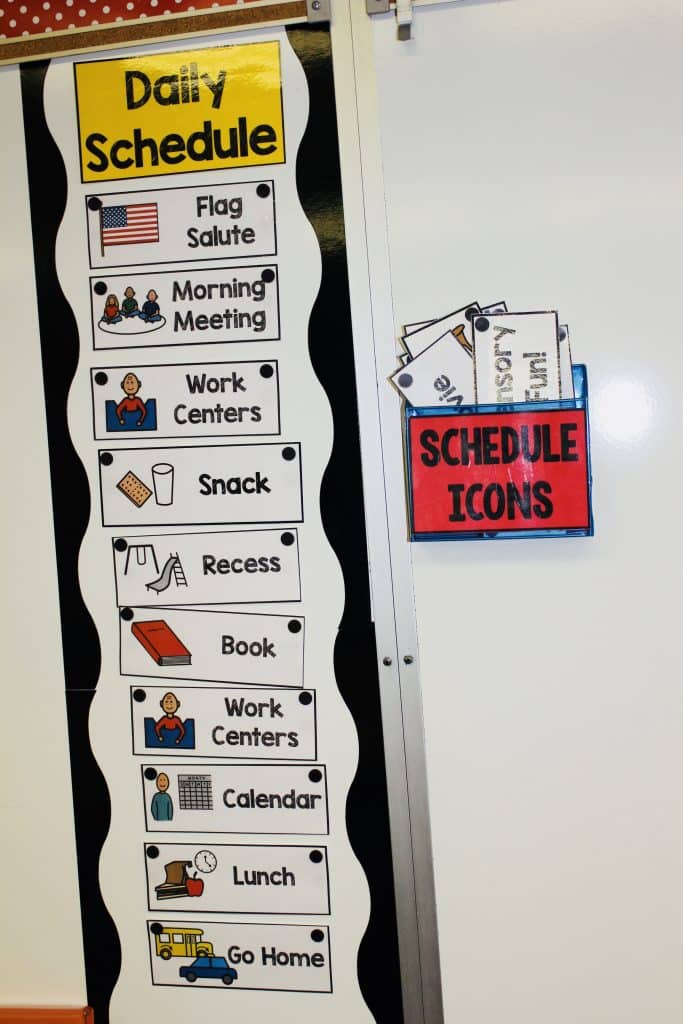
Weekly Schedule
Another way to build consistency with your classroom staff, school therapists and school administration is to create a weekly schedule board. Simply create a bulletin board with a weekly schedule on display. This can show class specials, individual therapies and whole group instruction.
A weekly schedule is a great way to help students understand schedule changes from day to day to fit in the school extras like PE, art and music. Here is a picture below showing a sample of a weekly schedule bulletin board.
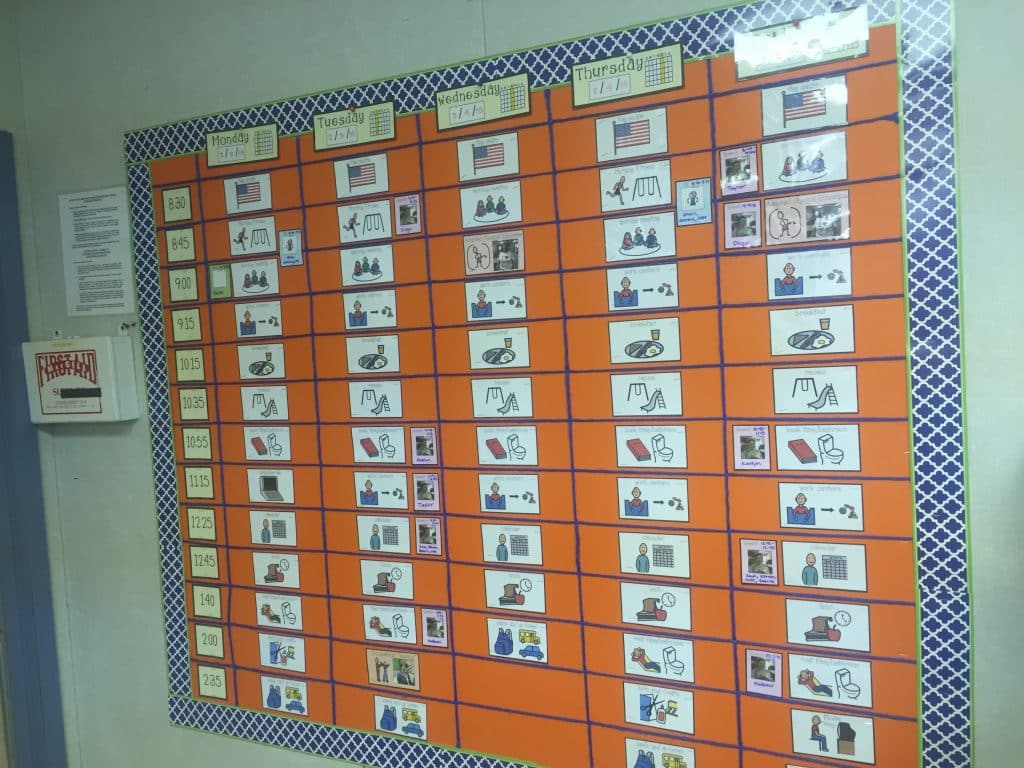
Real Picture Wall Schedule
Another version of a schedule is a schedule using real picture cards. This is for students not ready for icons, words or paper schedules. Simply take pictures within your school setting, print and laminate. Here is a picture below showing a real picture wall schedule.
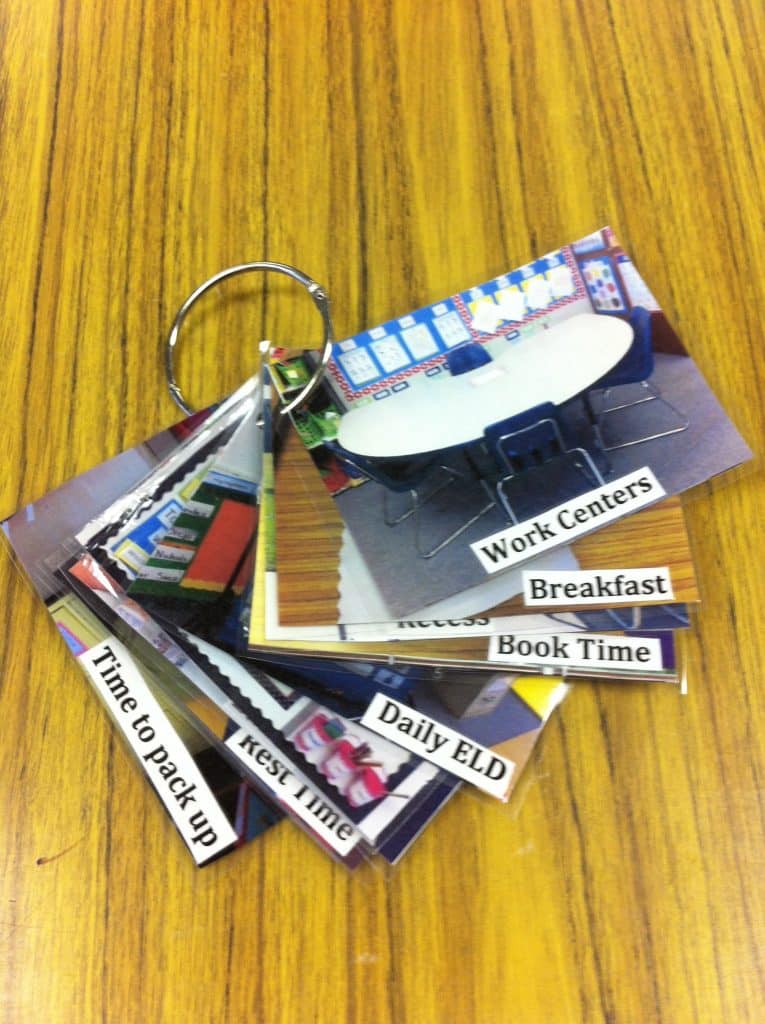
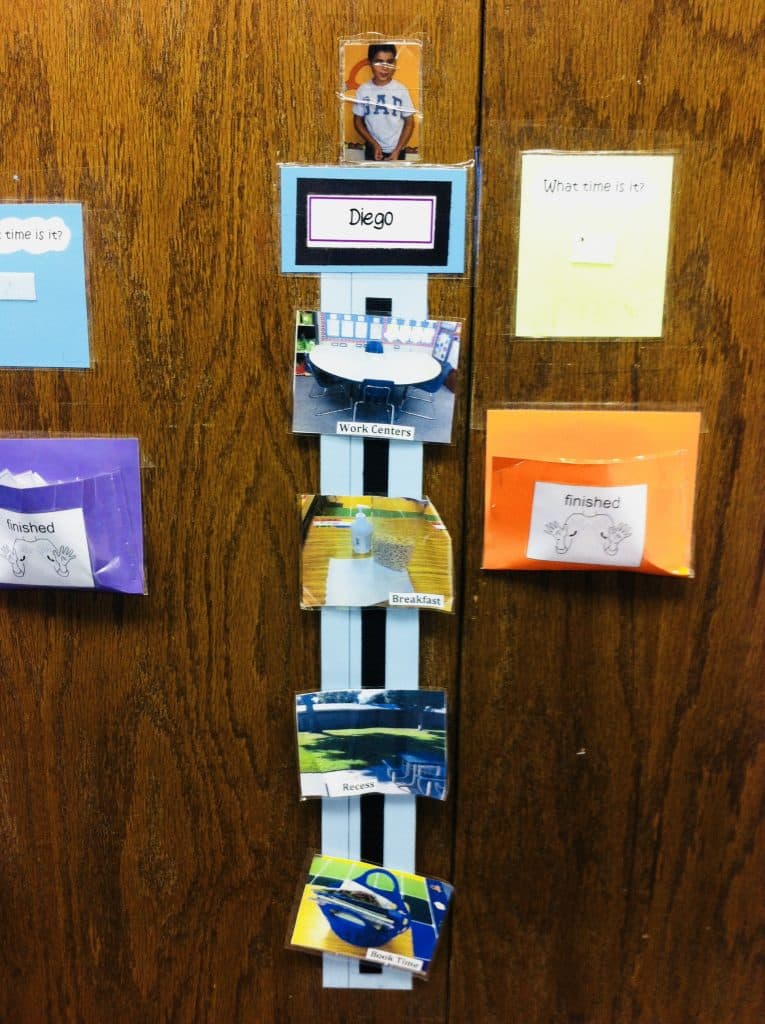
Picture Icon Wall Schedule
Another version of a visual schedule is a picture icon schedule using a program such as Boardmaker. Simply create visuals for each activity throughout the day. This is great for students who are able to translate a “clipart” image to real life experiences. Here is a picture below showing a picture icon wall schedule.
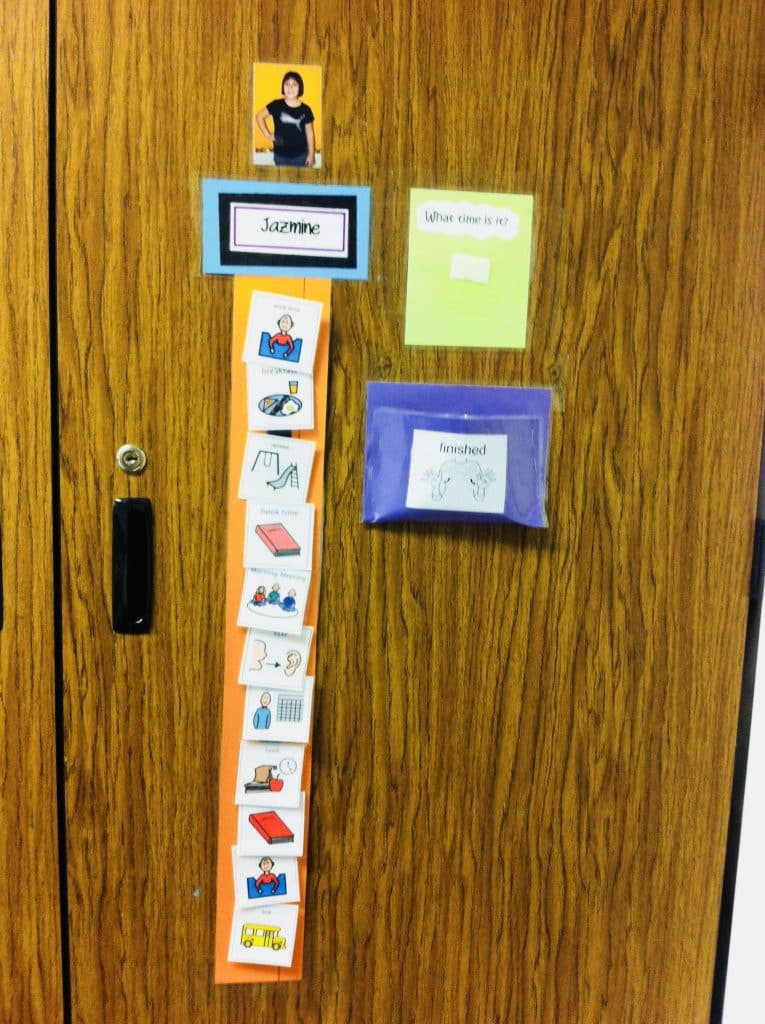
Text Wall Schedules
Do you have students who are reading and writing completely on their own, but struggle with transitions. Text schedule pieces might be a great version for these students. It builds reading skills while facilitating smooth trasnitosn in the classroom. Here is a picture below showing a test wall schedule.
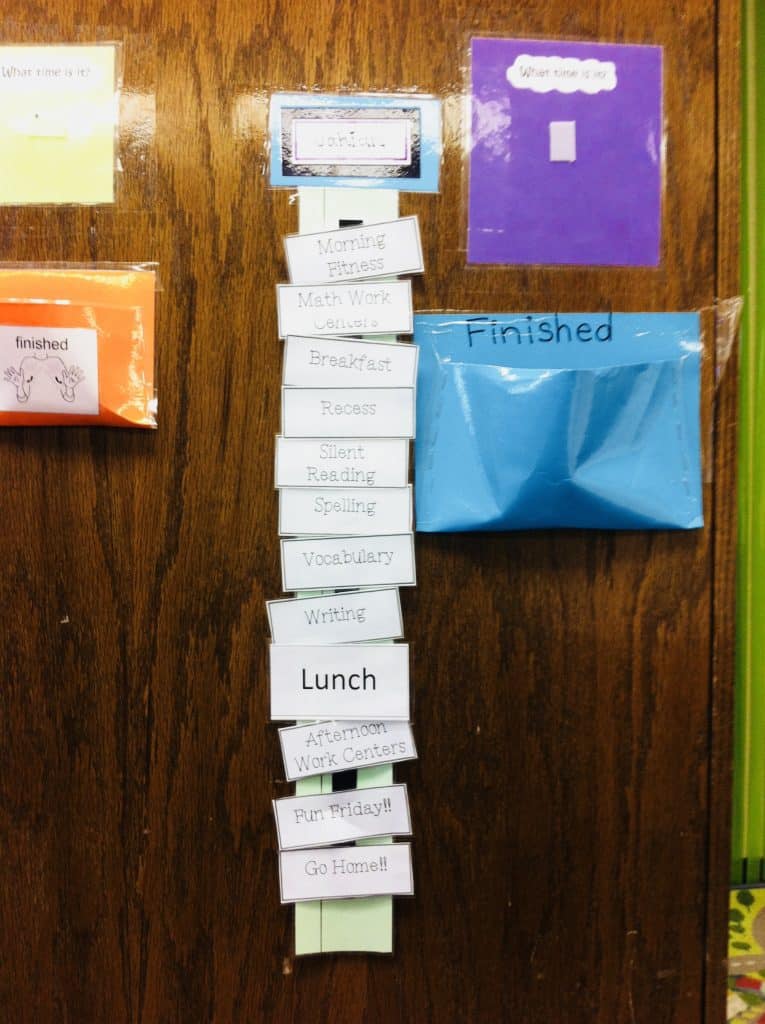
Object Schedule
Looking for an alternative to your wall schedule options? Consider an object wall schedule. Simply attach an item that represents the activity. This could be a pencil for work centers. Here are some pictures of sample object schedules.
Binder Schedule
One version of an individual student schedule is a binder schedule. This is more appropriate for older students transitioning towards independence. Students can take their schedule with them from class to activities. I especially love that it is portable for push in opportunities for my students. Within the binder schedules, you can also differentiate between clipart schedule icons, text schedule icons or real pictures. Here is a picture of a binder visual schedule.

How to Check A Visual Schedule
We discussed the different types of schedules you can implement within your classroom setting. Now, how does one check their schedule? It’s quite simple actually. Most schedules work from a top to bottom method. Use a picture symbol to represent a specific activity for each school activity. Place them in order, top to bottom, on the students visual schedule.
As students check their schedule, they learn to take the top picture icon and place it on the “what time is it” place. Some teachers use these picture icons as a transition cue and have students carry the picture icon to the activity. I preferred to keep all student visual schedule pieces in one place for easier oragnizion. When the activity is finished, the students move the picture card to the finished pocket. They then take the next picture icon on the schedule. Continue to do so until the schedule is clear.
For example, first thing in the morning your students are expected to sit on the carpet for morning meeting. How would they know? Students will walk into the classroom, walk to their schedule, grab the first icon (morning meeting) and place it on the “what time is it” board. From there, they know it is time to go and get ready for morning meeting.
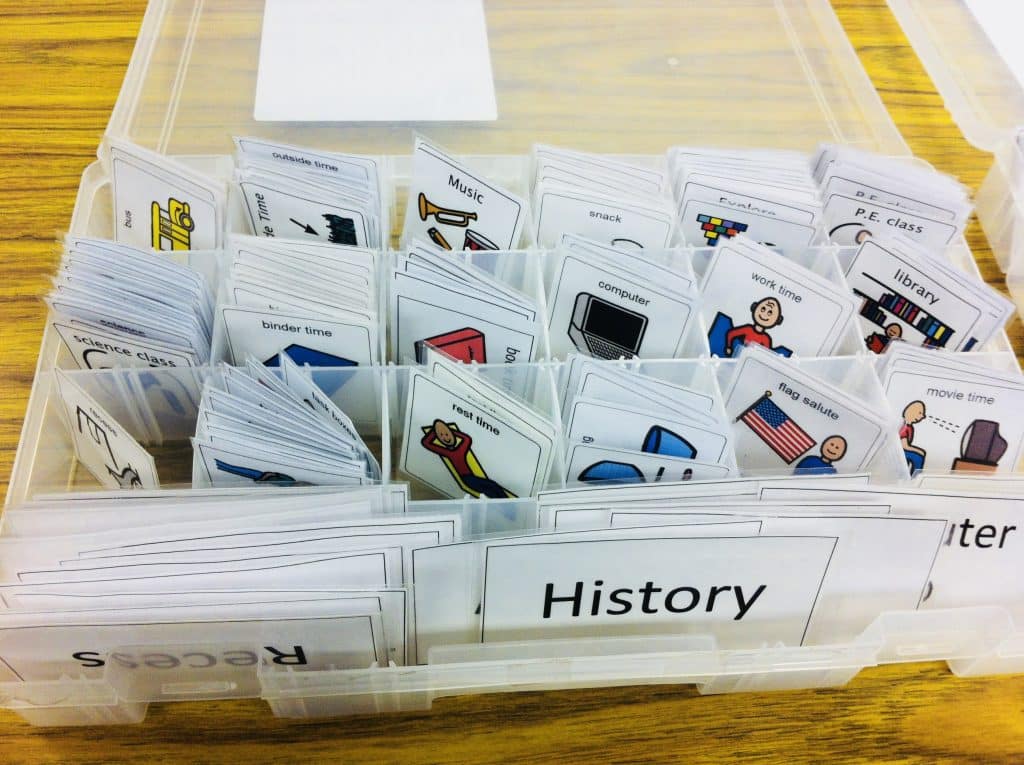
Determining Which Schedule To Use
We’ve discussed the different variations of visual schedules so far in this post. Now, how do you determine which schedules are going to meet the needs of the student’s? You need to take in consideration how you are going to be running your own classroom, the students specific needs, and the daily activities you plan to provide. With all of this information in conjunction with their IEP goals/accomodations/serices you can determine which schedule is going to benefit the student most.
When choosing the students own schedules, don’t think about it as a skill they need to master. They shouldn’t be “striving” to reach the least restrictive schedule. Simply consider which type of schedule will help the students transition with the most ease throughout your school day. Older students may transition away from individual schedule all together, and that is totally fine if they are capable of all transitions with just your classroom schedule.
The goal of individual schedules is to build independence and create smooth transitions within the classroom.

Like what you read? Don’t forget it, PIN IT!
